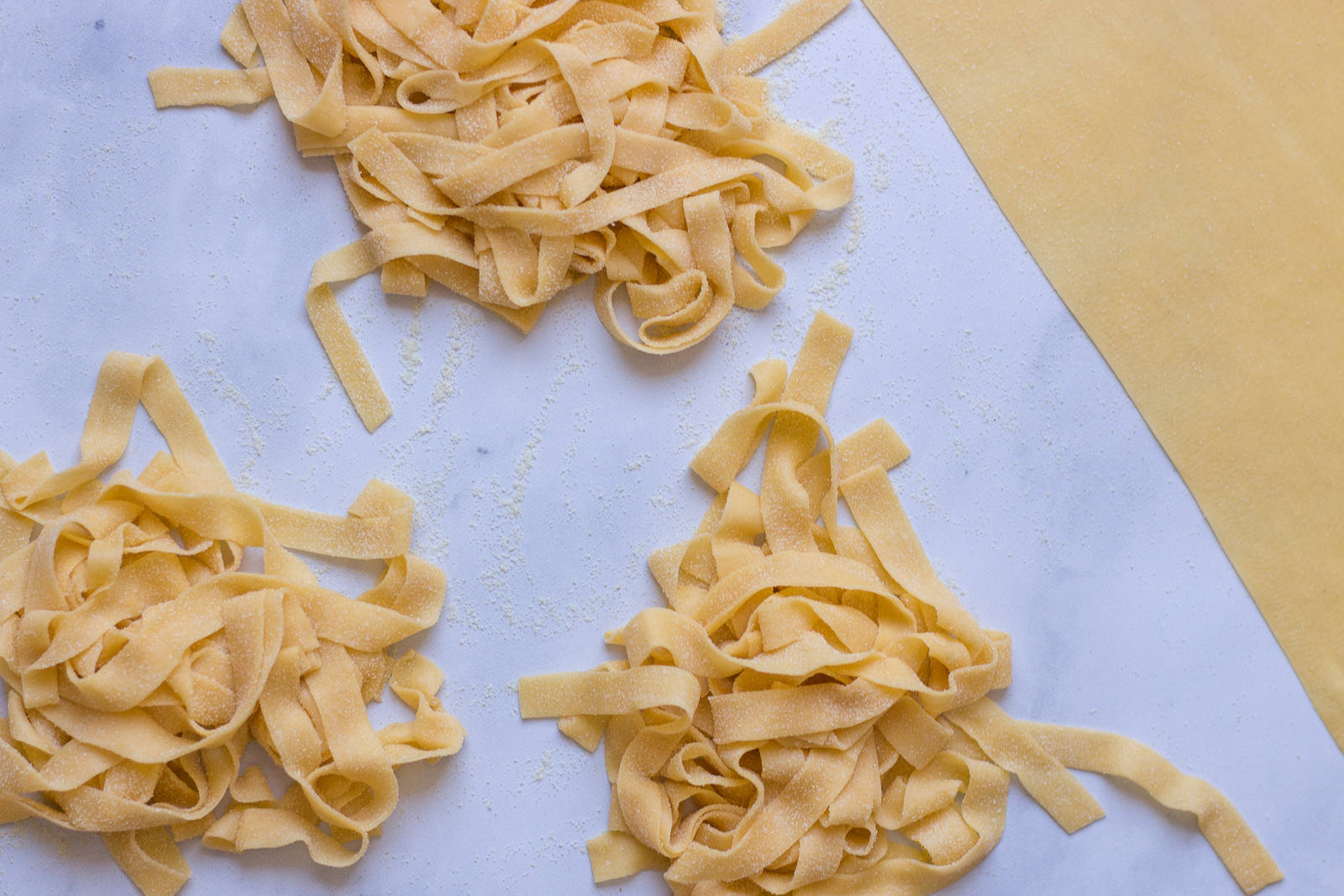
How to Make Tagliatelle
When I lived in Bologna, I quickly learned that out of all the fresh pasta shapes, the two most important ones for the Bolognesi were the two “T’s”: tortellini and tagliatelle.
I knew this because many food shops and mercati displayed these pastas in their shop window. While in Milan shops dressed up mannequins adorned with the latest fashion trends, Bologna’s shop windows showed off golden nests of tagliatelle and little plump tortellini splayed out on trays like fine jewels.
And then, of course, there was dining out. It’s nearly impossible to dine out at a restaurant in Bologna without seeing tortellini in brodo and tagliatelle con ragù alla bolognese on the menu.
If Bologna had a mascot, I imagine it would be these two little shapes holding hands like Bert and Ernie. (If the mayor of Bologna is reading this, can we make this happen?)
I soon became interested in learning how to create Bologna’s pasta fresca at home. I was an amateur pasta maker at the time and so I decided to start with tagliatelle, since, unlike tortellini, they don’t require any filling or special origami-like skills.
In fact, this is one of the reasons why I love tagliatelle. They’re quick and easy to make and they go with just about any kind of sauce. You simply mix up the dough, knead it, roll it out, fold it up like a sheet, and cut cut cut. If I’m making fresh pasta for a lot of people, you can bet that it’s going to be tagliatelle. It’s also why I’m not surprised that tagliatelle are commonly served on menus throughout Italy, from north to south.
But alas, if you’ve never made tagliatelle before, I get that it can feel a little intimidating. Heck, simply making the fresh pasta dough can feel scary (Been there. Trust me.) But I promise that after you make them once, you’ll be ready to roll them out just about any day of the week.
What’s the origin of tagliatelle?
Tagliatelle (pronounced “tah-lee-uh-tell-eh”) are flat, silky ribbons of fresh egg pasta. They get their name from the Italian verb tagliare, meaning “to cut.”
Although tagliatelle are widely served throughout Italy, they’re commonly found in Emilia-Romagna and, in particular, the region’s capital: Bologna.
According to legend, tagliatelle were invented in Bologna in 1501 by Zaffrino, the court cook for city’s tyrant, Giovanni II Bentivoglio. The famous noblewoman Lucrezia Borgia was passing through the city on her way to meet her husband Alfonso I d’Este, the duke of the nearby town of Ferrara. Zaffrino, having seen paintings of Lucrezia, was inspired by her long golden hair, prompting him to make a fresh egg pasta to match it.
Whether or not the story is true, there is one thing we know for sure: making tagliatelle is an art form that has been perfected in Bologna.
How are tagliatelle made?
The sfoglia (fresh egg pasta dough) must be rolled into a perfectly even and thin sheet—so thin that when it is held up to the window, you can see the Basilica di San Luca through it.
And it’s not only about the thinness—there is also an exact measurement for the width and length. According to Bolognese tradition, tagliatelle, once cooked and served, must measure exactly 8 mm (about ½ inch) wide, equal to 1/12,270 of the height of the Torre Degli Asinelli, one of the famous medieval towers in Bologna.
This is such a serious affair that on April 16, 1972, members of the Bologna delegation of the Accademia Italiana Della Cucina registered the dimensions with the city notary. To this day, there is a gold replica of a strand of tagliatelle, encased in a display within the city’s Chamber of Commerce. (I tried to visit it once, but unfortunately, the Chamber is not open to the public. This left me wondering: why build a tagliatelle icon if no one else can see it?)
To achieve the shape, you have two options. You can do it entirely by hand or use a pasta machine with a tagliatelle attachment. To do this by hand, roll out your dough into a thin circular sheet using a large Italian-style rolling pin. Next, roll up the sheet from opposite sides so that the rolls meet in the middle. Sprinkle a little flour in between the folds if the dough feels sticky. Next, take a large knife (there is a pasta knife specifically designed for this!) and cut across about 1-cm wide. Shake out the ribbons immediately to stop them from sticking.
To make tagliatelle with a pasta machine, sheet out the dough. then run it through the tagliatelle attachment. Sprinkle flour on the dough before running it through the attachment to keep it from sticking in the rollers.
Tagliatelle vs. Fettuccine
At first glance, tagliatelle and fettuccine appear identical. But, they’re not quite the same pasta. Hailing from Italy’s Emilia-Romagna and Marche regions, tagliatelle are made fresh, with 00 flour and eggs. They are on the thin side (for exact measurements, see above) and most often cut by hand. On the other hand, fettuccine are commonly found in Rome, and are a tad thicker. They are usually sold as an eggless dried pasta made from semolina flour and water.
What’s the best way to serve tagliatelle?
This widely depends on who you ask! For the Bolognesi, tagliatelle are practically synonymous with ragù alla bolognese. Elsewhere, tagliatelle can be served in a variety of ways. In Tuscany, you’ll often find them paired with a porcini mushroom sauce, while in Umbria you might see them served in the summer with shavings of local black truffle. Another classic dish for the Emilia-Romagna region is tagliatelle with prosciutto and butter, topped with a generous sprinkling of Parmigiano Reggiano.
I think tagliatelle are perhaps one of the most versatile fresh pastas out there. If you’re new to fresh pasta, this is a great shape to start with, as it really doesn’t require a whole lot of shaping or equipment. You can whip up a batch quickly too, making it an ideal pasta shape to serve at larger dinner parties.
Fresh Tagliatelle
4 servings
Prep time: 30 Minutes, plus resting
Cook time: 0 Minute
Special Equipment
wooden pastry board (optional)
hand-cranked pasta machine
Italian rolling pin
pasta knife (optional)
Ingredients
360 grams 00 flour, plus 40 grams extra for sprinkling
4 eggs
About ½ cup semolina flour, to prevent the pasta from sticking
Method
On a large, clean work surface or wooden pastry board, add the flour, forming a mound. In the middle of the mound, use your fingertips to carve out a well, leaving some flour on the bottom of the well.
Crack the eggs into the middle of the well. Using a fork, gently start to whisk the flour into the eggs, being careful not to let the eggs spill out. The dough will start to come together and form a thick, gooey paste. Continue working in all the flour until the dough starts to become a solid mass.
At this point, you can begin kneading the dough by hand. If the dough feels too wet and sticky, add a bit more flour.
Knead the dough for about 10 minutes. To knead, simply press the heel of your hand into the dough, press down, and release. Rotate the dough ¼ of the way around and repeat. Continue in this way until the dough is smooth and silky, about 10-15 minutes.
Finally, cover the dough in plastic wrap and let it rest at room temperature for at least 30 minutes and up to 2 hours. If saving for later, place it in the fridge, wrapped tightly, and use within 24 hours.
Roll out the dough into a thin sheet. You can either do this by hand with an Italian rolling pin or use a hand-cranked pasta machine.
If using a pasta machine, start by cutting your dough ball into 4 equally sized pieces. Take out one piece of dough and wrap up the rest in plastic wrap to keep it from drying out. Roll your piece of dough through the widest setting on your pasta machine. Then roll it through the next setting and the following one.
Next, fold the dough onto itself like a trifold brochure, so that it is just wide enough to feed through your machine. Roll the folded dough through the widest setting once more. Now, continue feeding it through each setting on your machine, all the way until you feed it through the thinnest setting. You may need a helping hand, as the sheet will get quite long. You can also cut it in half halfway through, and feed each half through each setting.
Next, cut your tagliatelle. There are a couple of ways you can do this.
If you have a tagliatelle attachment on your pasta machine, you can simply feed the sheet of dough through it.
Otherwise, you can cut the tagliatelle the old-fashioned way: with a knife!
Sprinkle a bit of semolina flour over the sheet of dough, using your hands to smooth the flour over the sheet. Next, fold it in half, 3 or 4 times until you have a blanket of dough about 2-4 inches long. Take a large chef’s knife or pastry scraper, and cut the dough into 7 mm wide strips (about ¼ inch). Note: when cooked they will become around 8 mm wide. If you want to be precise, you can use a ruler to measure your cuts.
Sprinkle more semolina flour on top of the strips and gently unfurl the pasta with your fingers. Form a nest and set aside on a floured sheet.
Continue the same process for the remaining dough, working in batches.
For thicker tagliatelle, simply roll the dough through the second to last setting on your pasta machine, skipping the final setting.
For spinach tagliatelle, add 2 tablespoons of cooked, finely chopped spinach to the dough along with the eggs. Make sure the spinach is fully cooled and that you squeeze as much water out of it as possible. Knead well. You may need to add a bit more flour if the dough feels sticky.
Post a Comment
You must be logged in to post a comment.


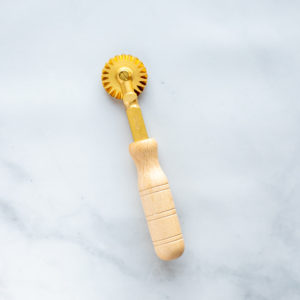
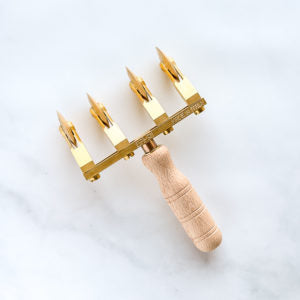
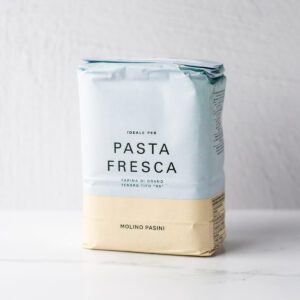
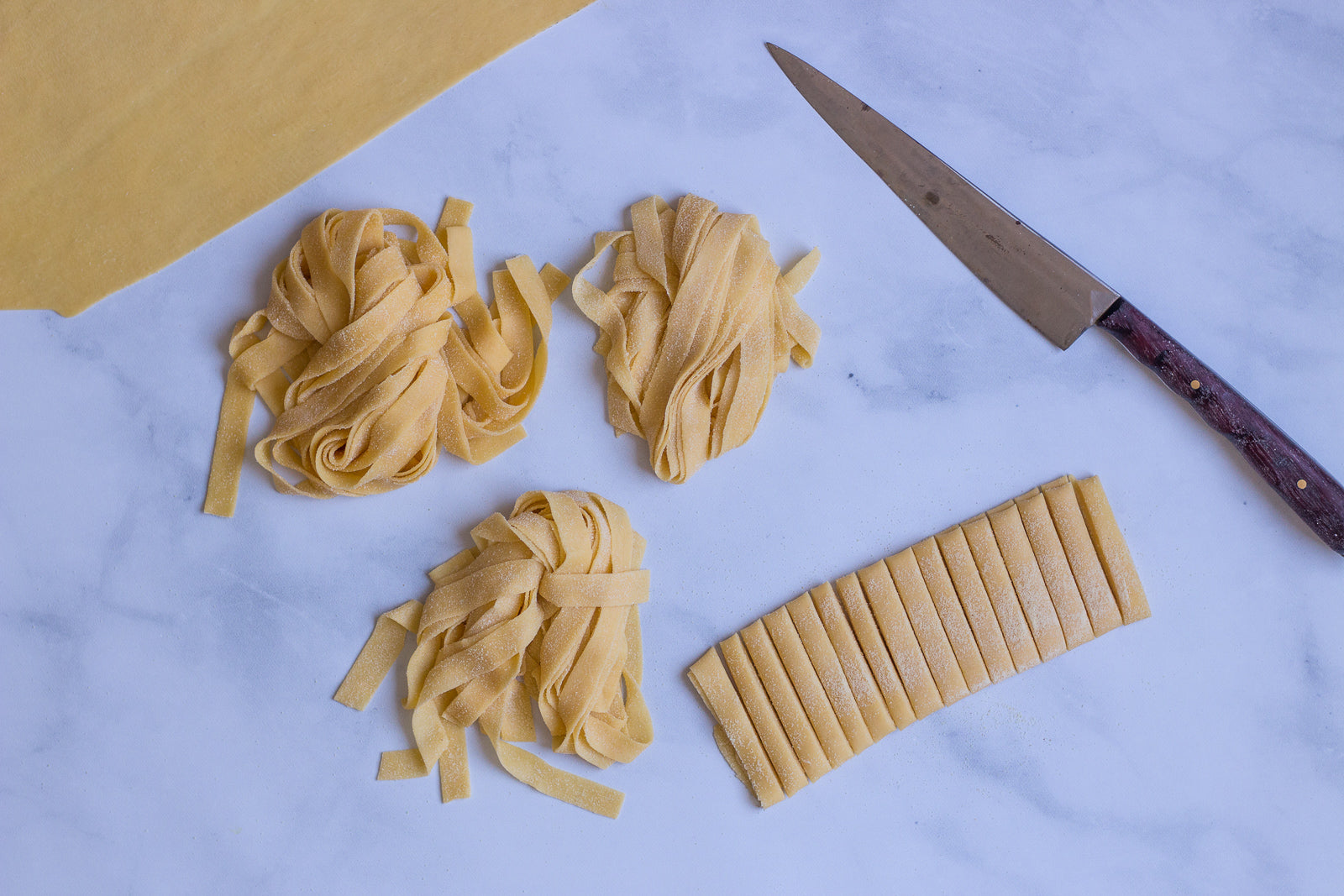
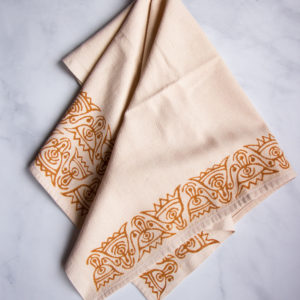
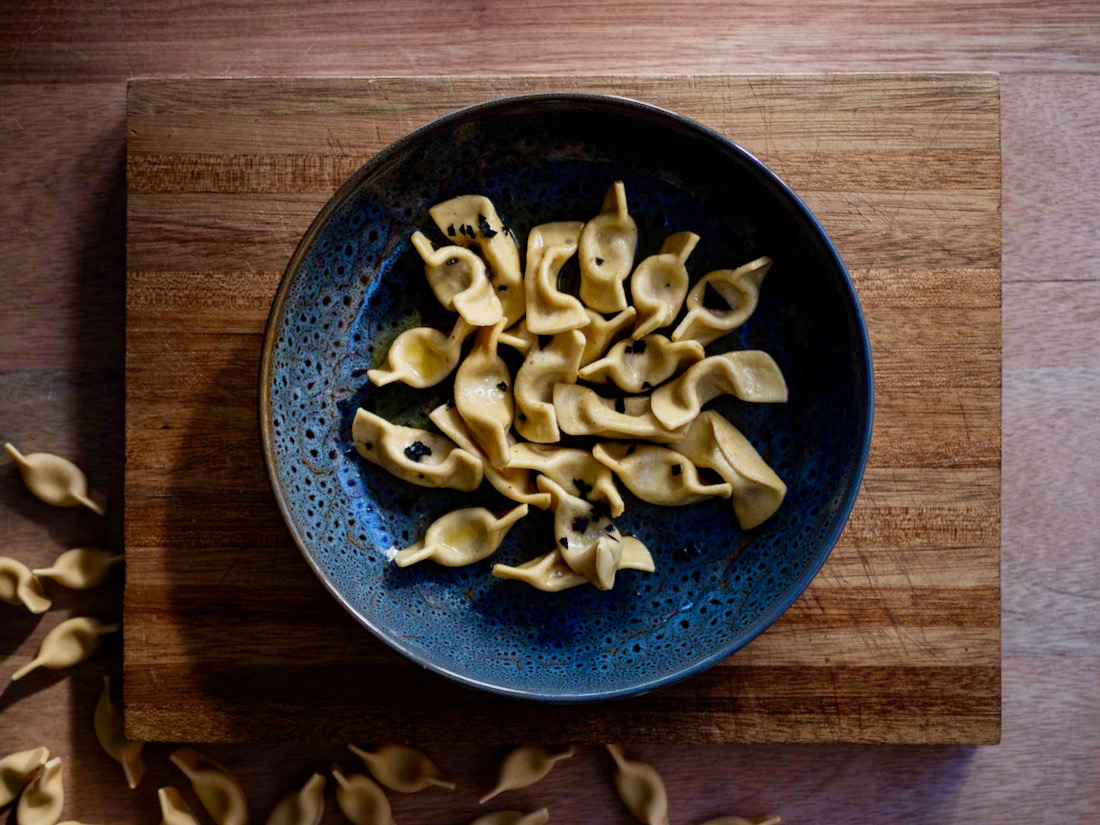
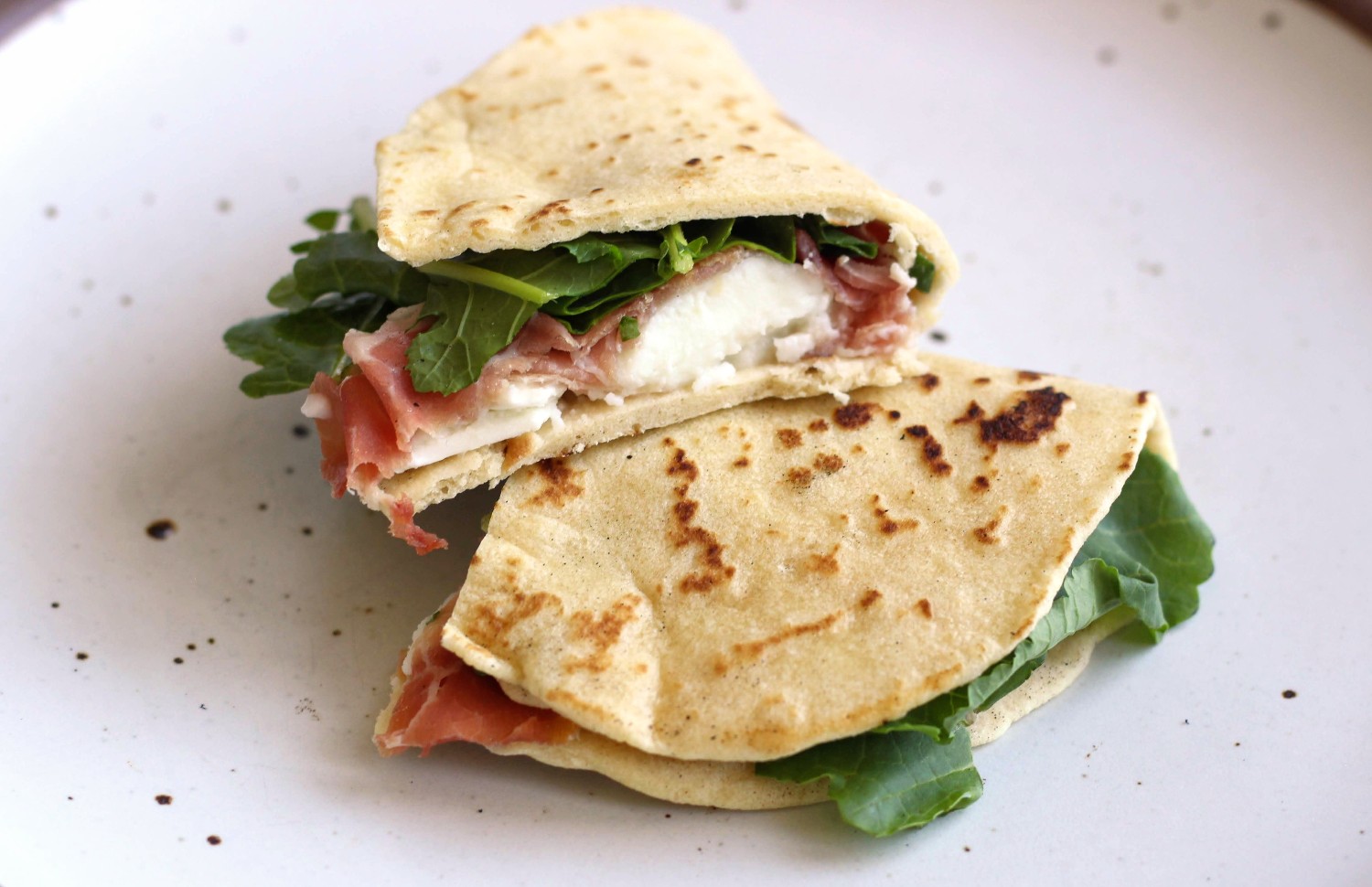
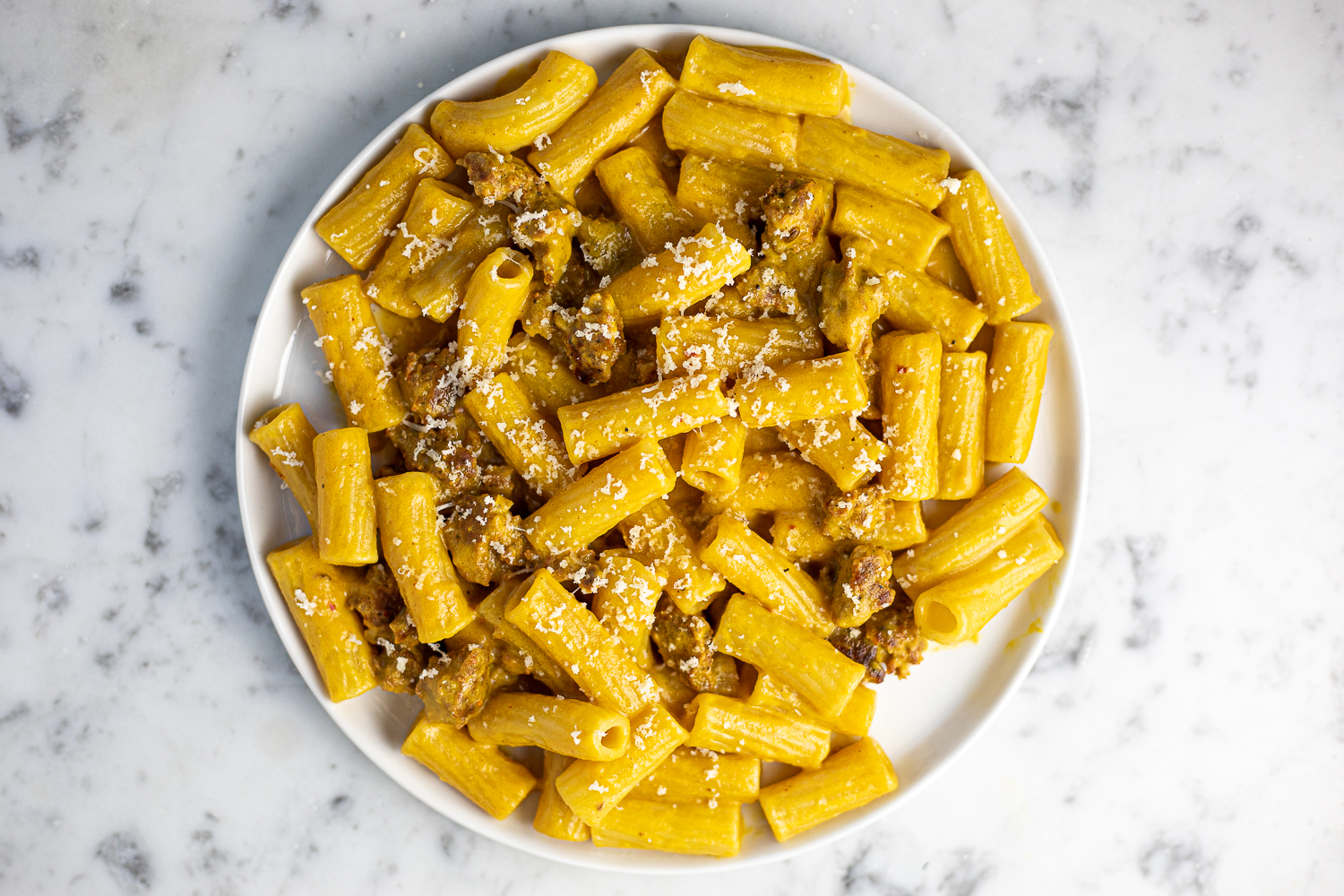
Pingback: Four Essential Tools for Making Homemade Pasta Like a True Italian | q.b. cucina
Pingback: Guide to Italian Flour | q.b. cucina
Pingback: Tagliatelle with Prosciutto and Butter | q.b. cucina